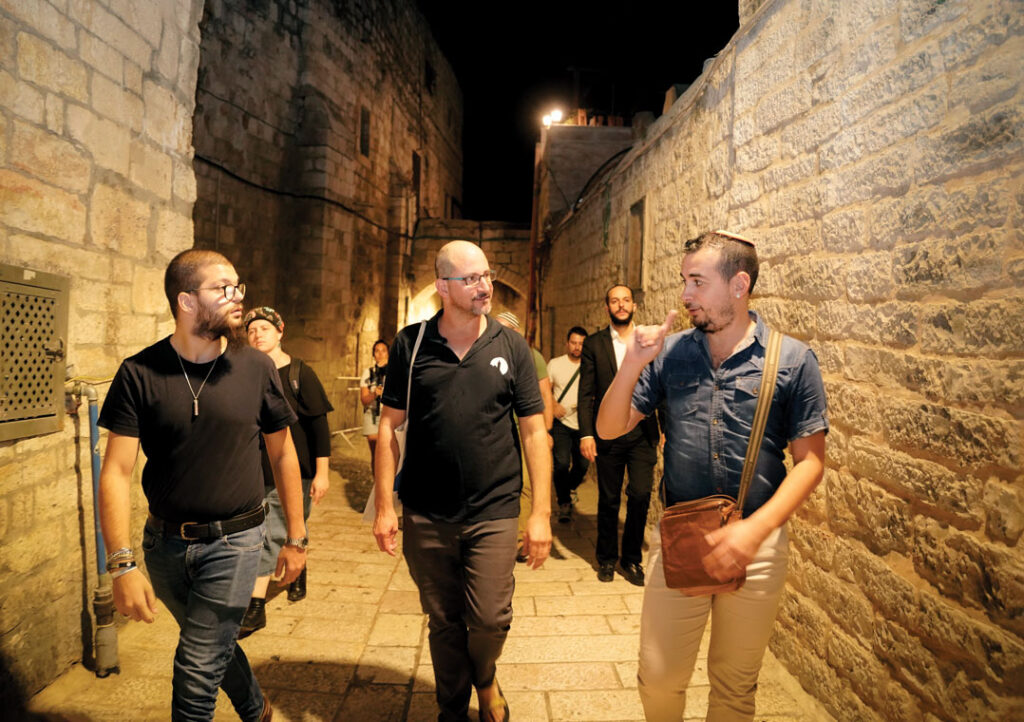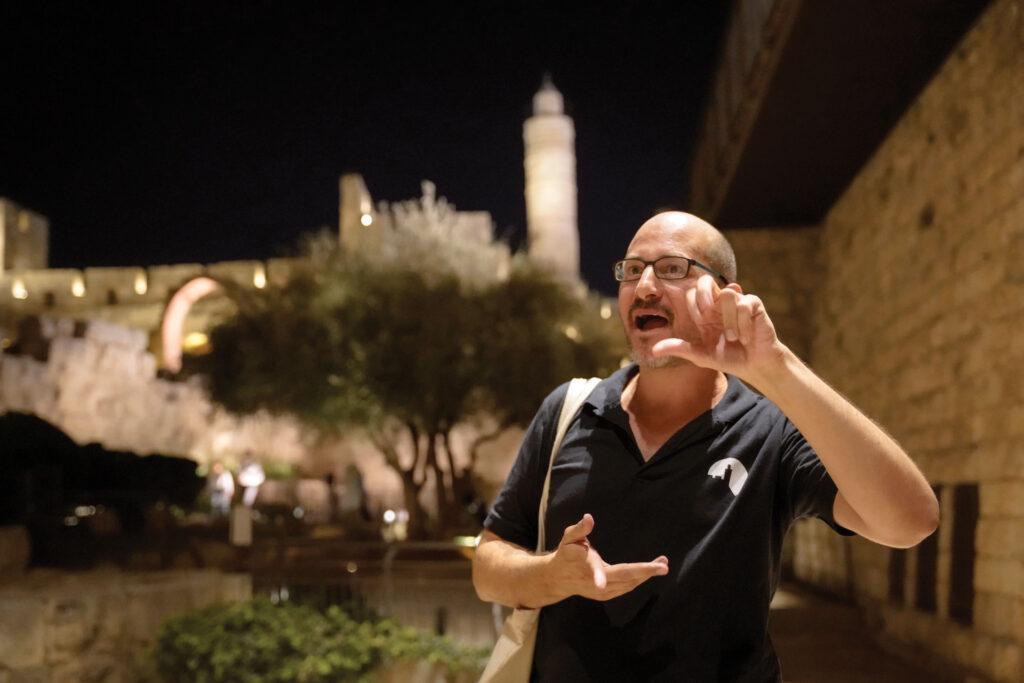
THE CITADEL IS STILL MAKING HISTORY AFTER 3,000 YEARS
MARA LASSNER
IN ELUL ALONE, MORE THAN 100,000 VISITORS EXPERIENCE THE OLD CITY OF JERUSALEM TO SAY SELICHOT, THE PRAYERS OF PENITENCE IN ANTICIPATION OF ROSH HASHANA AND YOM KIPPUR. FOR THE FIRST TIME, PEOPLE WHO ARE DEAF OR HEARING IMPAIRED PARTICIPATED FULLY IN A “SELICHOT TOUR” LED BY A QUALIFIED TOWER OF DAVID JERUSALEM MUSEUM TOUR GUIDE FLUENT IN ISRAELI, INTERNATIONAL, AND AMERICAN SIGN LANGUAGE.
Like other au courant Selichot tours visiting assorted sites in the Old City, this one started at the Tower of David Jerusalem Museum in the new exhibition rooms, went through the moat and Kishle excavations from the time of the Second Temple, 2,000 years ago, ascended to the top of the Phasael Tower with a spectacular view of Jerusalem, and ended at the Kotel, to join hundreds gathered there to say the night-time recitation of Selichot.
Director and Chief Curator of the Tower of David Museum Eilat Lieber excitedly shared, “The Tower of David Museum is committed to making the history and stories of Jerusalem accessible to all, be that through our inclusive programming or our commitment to improving physical accessibility in this magnificent historic site. Underlying every project at the Museum is the fundamental desire to make it accessible.”
The Museum reopened this summer after more than a decade of planning and three years of construction. Thanks to a team of archaeologists, architects, curators, researchers, designers, creatives, and generous donors, the $50 million renewal and conservation project brings history to life in a multi-sensory, physically accessible, and inclusive museum within the 3,000-year-old Migdal David. Also known as the Citadel, which was a protective structure meant to keep invaders out of Jerusalem, it is now welcoming to visitors, including those who use a wheelchair, have physical, sensory, or cognitive disabilities, or push a stroller.




The new Tower of David Jerusalem Museum stands as a prominent cultural institution, intertwining the historical narrative of Jerusalem with its significance to Judaism. Through ancient authentic artifacts, as well as the latest in multi-media technology, film and animation with interactive touch screens, video mapping, immersive video installations, and tour guides who sign, the museum’s new permanent exhibition focuses on the events and developments that have shaped the city and continue to influence its present-day identity as the capital of the State of Israel.
The museum worked closely with the Israel Antiquities Authority to preserve the integrity of the ancient site while adding two elevators, widening paths, adding ramps, and updating its exhibits incorporating multisensory appeal.
“This is the first time in history that someone with a wheelchair can access the different layers of the citadel,” explained Reut Kozak, an archaeologist who is head of access and inclusion at the Museum. After much deliberation and planning two elevators have been installed. However, within the guidelines to preserve the citadel’s silhouette and the city’s skyline, one elevator was not permitted to reach the observation deck. Yet, to ensure everyone can experience all it offers, the Museum has a 360° virtual view and explanation for those unable to climb to the top. Sighted and blind visitors who can climb can feel the wind on their faces and uneven stones beneath their feet and touch a model of the city on the observation deck.
Access Israel (a collaborative partner of US-based Accessibility Accelerator), a nonprofit organization dedicated to making the world accessible for all, has helped guide the Tower of David Jerusalem Museum in its commitment to accessibility. The Museum now offers tours for the blind and sight-impaired and offers audio descriptions and cordless headphones for its Night Experience sound and light show. For adults and families with children with special needs, the Museum offers a monthly “relaxed performance” of the Night Experience and daytime cultural activities in its courtyard reinforcing the Museum’s exhibits and history lessons.
Jerusalem Regional Archaeologist, Israel Antiquities Authority, Dr. Amit Re’em exclaimed, “Now, and only now, is it possible to reach different levels of the Citadel, touch the stones, and get excited. This is a big achievement. For us at the Israel Antiquities Authority, and in general for lovers of Jerusalem, this is a very important development.”
The inclusive Selichot Tour is a wonderful entree into the holiday season. The gem of a Museum at the entrance to the Old City is beautiful, engaging, and intriguing. It exemplifies unity as it celebrates the vibrancy and diversity of this ancient and modern city that is still making history.



